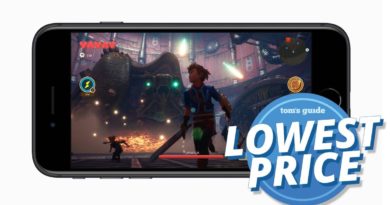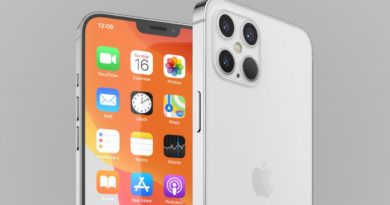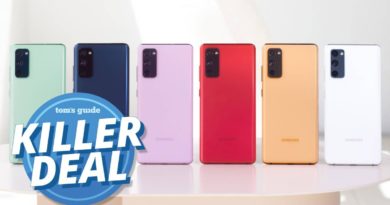Best iPhones in 2020: Which iPhone should you buy?
![]()
Finding the best iPhones can be a tricky proposition. After all, with more iPhones than ever out, all available at different prices, it seems like there’s an Apple phone for just about any type of user.
Still, with the iPhone 12 Pro Max and iPhone 12 mini completing Apple’s phone rollout of this year, the picture is now clear. We’ve had a chance to review both of those phones — along with every other recently unveiled iPhone — and they can claim a place among the best phones overall.
As part of the iPhone 12 launch, Apple’s entire lineup of available phones has undergone a revamp. In addition to the four new iPhone 12 models, the iPhone 11 and iPhone XR are still here, but at reduced prices. And the iPhone SE introduced earlier this year is still a great value.
Here are our recommendations and rankings for the best iPhones available right now.
What are the best iPhones?
Based on our testing, the iPhone 12 Pro Max is just about perfect. We’ve put it at the head of our list for the best iPhones thanks to its big, immersive screen and impressive camera setup. Other top features like the powerful A14 Bionic processor and 5G connectivity are found in the three other entries in the iPhone 12 lineup.
That’s why, the iPhone 12 Pro and iPhone 12 are both worth your consideration, too, especially since they cost less than the iPhone 12 Pro Max. And if you like compact phones, you can’t go wrong with the iPhone 12 mini, which is now the smallest iPhone Apple makes.
You have lots of options now if you don’t want to spend more than $600 on your next iPhone. Apple slashed the price of the iPhone 11 by $100. That used to be the best iPhone for most people, and it remains an excellent choice even a year after its release. The iPhone XR is cheaper, too, at $499, but anyone who wants the cheapest iPhone available will likely turn to the iPhone SE, especially if they prefer phones that are compact.
The best iPhones you can buy right now


The iPhone 12 Pro Max is the pinnacle of iPhones, especially if you’re looking for a bigger display. This phone has it all, starting with a stunning 6.7-inch OLED display that’s bright and colorful; it’s the perfect complement to a best-in-class camera system for shooting and enjoy all the photos and videos you’ll be taking.
The Pro Max has all the same great camera features as the regular iPhone 12 Pro — including Smart HDR 3, improved Magic Fusion for better details and Night Mode portraits via the new LiDAR sensor. But you also get a larger main sensor for better low-light performance and a longer 2.5x optical zoom.
Another reason to splurge for the iPhone 12 Pro Max is the battery life. This handset lasted nearly 11 hours on our 5G web surfing test, which is nearly 2 hours longer than the regular iPhone 12 Pro. A blazing fast A14 Bionic processor, 5G capability and a touch Ceramic Shield display round out the features on this masterpiece.
Read our full iPhone 12 Pro Max review.

Apple hasn’t held much back with the iPhone 12 Pro. The phone runs on an A14 Bionic — the fastest mobile processor we’ve tested — and offers compatibility with 5G, no matter what kind of network a wireless carrier has built. The three rear cameras from last year’s iPhone Pro models are now augmented with a LiDAR sensor for improved photo features. And Apple did all this while holding the price of the phone to $999.
You’ll have to get by without an included charger, but the iPhone 12 supports Apple’s new MagSafe interface in which wireless charging pads attach to the back of the phone magnetically for a more consistent charging experience. Spring for a 20W fast charger and you’ll get a 50% charge in 30 minutes — which you’ll need since 5G connectivity eats into battery life.
It’s the cameras on the iPhone 12 Pro that really delight, especially now that portrait mode works at night and you can use Night Mode with both the Ultra-Wide camera and the front TrueDepth camera. This is the phone to get if you want the best that Apple has to offer, without having to go too far above the $1,000 threshold.
Read our full iPhone 12 Pro review.

If you’re looking for a compact iPhone, look no further than the iPhone 12 mini. It’s the smallest phone Apple makes — yes, smaller than the iPhone SE — but it doesn’t skimp on features. You get the same A14 processor found in the other iPhone 12 models, and the rear cameras on the iPhone 12 mini are every bit as impressive as the ones found on the larger iPhone 12.
Like the rest of the iPhone 12 lineup, the iPhone 12 mini offers 5G connectivity, supporting all flavors of the faster networking standard. That includes mmWave 5G, which is particularly impressive given the number of antennas Apple had to fit inside such a compact phone. And the mini has the most attractive price of any new iPhone, starting at just $699. Overall, the iPhone 12 mini is one of the best iPhones yet because it’s design is so refreshing.
Read our full iPhone 12 mini review.

The iPhone 12 features many of the best aspects of the iPhone 12 Pro, but for less money — this model starts at $200 less than Apple’s Pro handset. But you’re not making too many compromises to get this more affordable iPhone.
After all, the iPhone 12 has the same A14 Bionic processor and comprehensive 5G connectivity as the more expensive Pro model. You only get two rear cameras on the iPhone 12, but they perform better than ever, thanks to software improvements Apple made. A new 7-element lens on the main camera combined with a wider aperture than before means better photos in low-light and sharper images overall.
The LCD panel Apple used on the iPhone 12’s predecessor is gone, replaced by an OLED screen that offers the same 6.1 inches of display real estate as before. You’re still confined to 64GB of storage in the base model and there’s no charger included with the phone, but otherwise, this is a stellar addition to the iPhone lineup.
Read our full iPhone 12 review.

The iPhone 11 is no longer the new kid in town, replaced by Apple’s iPhone 12 models. But it’s still available and it’s the least expensive it’s ever been at $599. That price, combined with the fact that the A13 Bionic processor is still more powerful than more recently released Android phones, makes this a good buy even a year after the iPhone 11’s debut.
As with the iPhone 12, you are giving up a dedicated telephoto lens, as the iPhone 11 features a 12-MP wide angle and ultra wide angle shooters. But it’s capable of the same camera effects as the rest of the iPhone 11 family, including portrait shots, ultra wide angle selfies and Night Mode for better low-light photos. You can also expect more than 11 hours of battery life from the iPhone 11, though you’ll have to spring for a separately-sold fast-charging adapter to juice back up at the quickest speeds.
See our full iPhone 11 review.

You can’t keep a good iPhone down, which is why Apple revived the iPhone SE four years after launching the original low-cost, compact iPhone. The iPhone SE 2020 is a little larger than before — adopting the 4.7-inch screen and form factor of the discontinued iPhone 8 — but it’s kept a low price that will appeal to iPhone fans looking for the best bargain around.
It’s not just the price that makes the iPhone SE so appealing. The phone runs on the same A13 processor you’ll find in the iPhone 11, so the iPhone SE will remain a top-performing phone for years into the future, especially as regular iOS updates add new features. You’ll just get one rear camera with this phone, but it’s a good one, augmented by the A13’s Neural Engine to augment your photos with computational photography.
This isn’t the longest-lasting iPhone by any stretch of the imagination, as our iPhone SE 2020 battery tests found, and we wish that camera would support Apple’s Night mode for better low-light photography. But if you want some premium power in a phone that fits comfortably in one hand, the iPhone SE was built with you in mind.
Read our full iPhone SE 2020 review.

If the iPhone SE’s small screen doesn’t work for you, you can still get an iPhone with a large display and a low price. The iPhone XR now costs $499, and while the phone is two years old, it’s still an option for people who don’t mind sacrificing a few features for a less expensive device. In fact, you could even argue that the iPhone XR is a better value than the iPhone SE.
The XR has an LCD panel, not the OLED screen found in newer iPhones, and you’ll have to get by with just a single rear camera while the similarly sized iPhone 11 and iPhone 12 feature two lenses. But for many users, those won’t be significant sacrifices, especially in light of what you get in return.
Though the newer iPhone models have a faster processor, the A12 Bionic powering the iPhone XR still holds its own. The iPhone XR also gets great battery life — on par with our iPhone 11 test results and only 15 minutes behind the iPhone 11 Pro Max’s 11 hour, 40 minute result. And if you value design, you’ll appreciate the rainbow of colors the iPhone XR comes in. The iPhone XR isn’t very compact, but it delivers a great balance of price and performance, even newer iPhones providing more features.
See our full iPhone XR review.
How to choose the best iPhone for you
The best way to determine the iPhone you should buy is to take stock of the features and capabilities that matter most to you. If battery life is especially important, seek out a larger iPhone, as they tend to have bigger batteries to match their screen size. What’s more, because iOS is known to be generally efficient in terms of energy consumption, even the smaller models tend to last longer than average on a charge.
If you’re basing your next iPhone purchase off camera quality, the top-tier Pro variants are easy recommendations, thanks to triple-lens designs that allow you to capture multiple different perspectives, from zoomed-out ultra wide-angle images to shallow depth-of-field portraits. They’re also remarkably good in challenging lighting scenarios, like when shooting in a dimly-lit indoor space, or outdoors at night.
All that said, if price is king, and saving the absolute most on your next smartphone purchase is your top priority, you should have no reservations about nabbing an iPhone SE 2020 or iPhone XR. These may be on the cheaper side of Apple’s range, but they’re still made of flagship-quality materials, with enough power and performance to sustain years of use.
However, be mindful of storage. Apple’s most recent iPhones start at $599 for the iPhone 11 and $699 for the iPhone 12. Those base prices get you a phone with 64GB of space, but if you want more capacity, be prepared for that price tag to go up. A 256GB iPhone 12 will cost you $949 — almost as much as an iPhone 12 Pro. At least Apple has upped the base storage on the iPhone 12 Pro models to 128GB.
If you buy your iPhone through Apple, you may be able to save money by trading in your current phone. Apple’s trade-in rebates range from up to $140 off for iPhone SE 2020 purchases to a potential $370 rebate on iPhone 12 Pro orders. We can help you find the best iPhone deals from retailers and carriers.
When Apple releases new iPhones, it cuts the price on the models it keeps around. The iPhone XR now costs less than $500, for example while the iPhone 11 has dropped to $699. Apple is no longer selling the iPhone 11 Pro or Pro Max, but retailers and carriers might be. Just confirm that the price is lower than what you’d pay for the iPhone 12 Pro models.
All of the iPhones mentioned here run the latest version of iOS, Apple’s mobile operating system. And they can upgrade to iOS 14, the new version that ships on the iPhone 12. (In fact, iPhones dating back to the iPhone 6s and original iPhone SE will be able to run iOS 14.)
As always, you’ll hear rumors about upcoming iPhones. But even with iPhone 13 rumors starting to swirl, Apple likely won’t come out with a new phone until fall 2021. That makes this the perfect time to get a new iPhone and know that it’s not going to become instantly outdated.
How we test iPhones
As with any smartphone we test at Tom’s Guide, we evaluate iPhones for days in real-world use cases. We also benchmark Apple’s phones using a gamut of performance-measuring apps that allow us to compare iPhone performance to what Android devices are capable of. In addition to synthetic benchmarks, we also run real-world tests, including a video transcoding test in Adobe Premiere Rush that compares the iPhone’s processing speed with other devices.
In our lab, we use a light meter to ascertain display quality data, like brightness and color accuracy to help us evaluate the display of the best iPhones. Our proprietary battery test determines longevity on a charge by endlessly streaming webpages over an LTE network; we then recharge the iPhones to see how quickly they charge in 15-minute intervals.
To compare cameras, we take any iPhone we review out and shoot photos in a variety of settings. We also bring along a comparable smartphone to see how the iPhone’s photographic output measures up.
We explore Apple’s iOS improvements, test gaming performance and evaluate the phone’s speakers — and each of these factors play a part in our final verdict.


